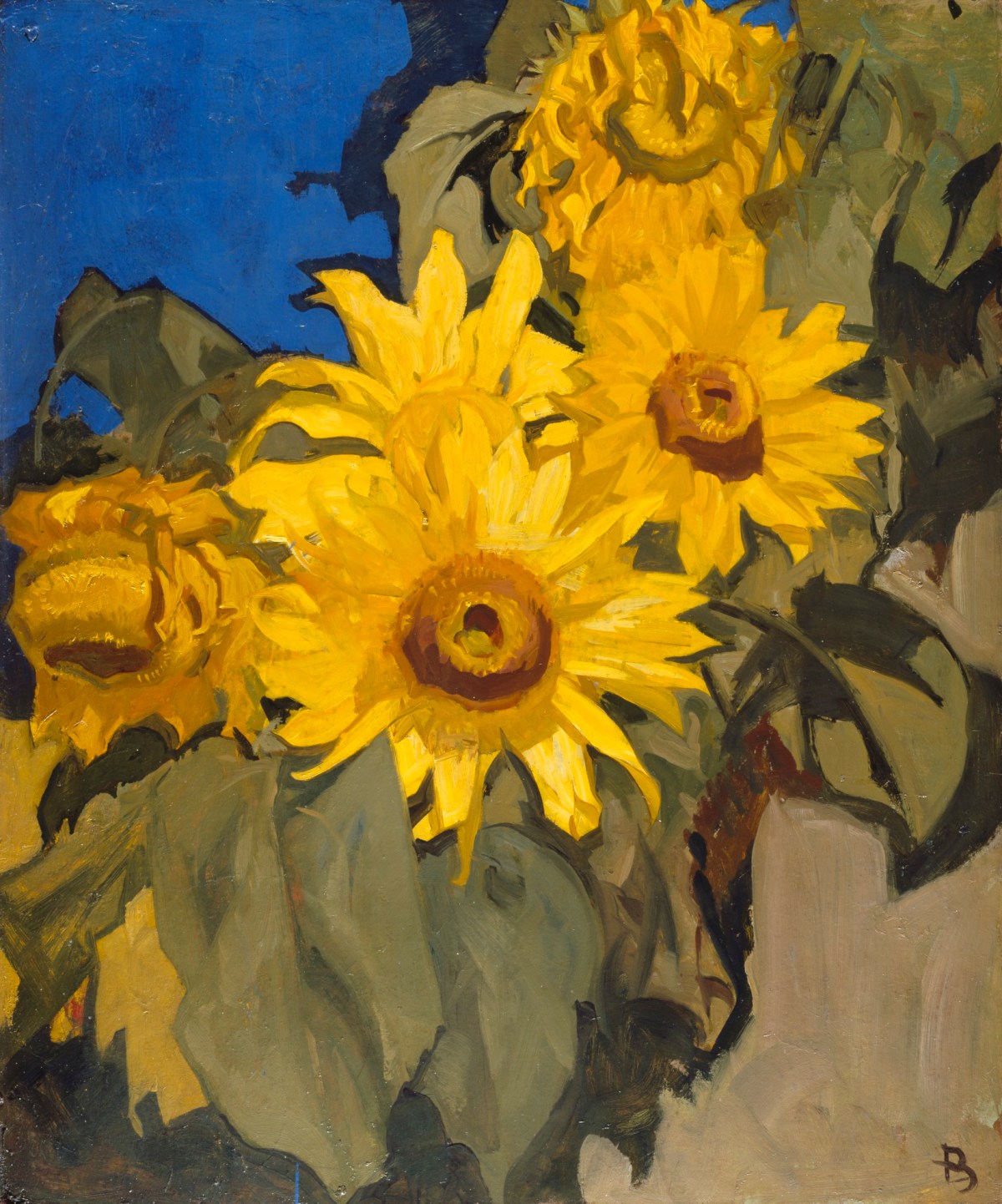
Sir Frank Brangwyn RA, Sunflowers, Early 20th century?.
Oil on board. 755 mm x 632 mm. © The Artist's Estate. © Photo: Royal Academy of Arts, London. Photographer: John Hammond.
This image is not available to download. To licence this image for commercial purposes, contact our Picture Library at picturelibrary@royalacademy.org.uk
Sunflowers, Early 20th century?
Sir Frank Brangwyn RA (1867 - 1956)
RA Collection: Art
Frank Brangwyn RA’s Sunflowers is an explosion of colour that captures the vibrancy of a much-loved plant. The artist was by no means innovative or daring in his subject matter when he decided to paint these flowers. Flower painting has a long and winding history in art throughout the centuries, stemming from the hugely popular Dutch flower painters in the 17th century, such as Jan van Huysum and Ambrosius Bosschaert. Their fabulous and luscious blooms featured many different plants, mostly native to the Low Countries, such as tulips and hyacinths. The sunflower species, however, originated in North America and was only brought to Europe by Spanish explorers around 1500. By the 18th and 19th centuries, sunflowers were widespread in Europe and painters could access them as inspirational subjects.
While undeniably inspired by the long tradition of painting sunflowers, Brangwyn reinterprets the subject through his own unique style. The focus of the painting is on colour and form, clearly-defined shapes interlocking across the canvas to construct the flowers and their ambiguous surroundings. Taken as a whole, this is unquestionably a painting about sunflowers, but Brangwyn also gives voice to the materiality of the paint, letting the leaves and background dissolve into shapes and brushstrokes. The different brightness of the colours – the yellow petals startling against the murky green leaves – illustrates Brangwyn’s fondness for assertive chiaroscuro (using contrasting patches of light and dark). This was a technique he added to his artistic armoury after visiting Spain, inspired by the intense light of the landscape. The pieced-together quality of Sunflowers is typical, with many of his early 20th-century works appearing “more like a mosaic pavement than a picture” as one reviewer in the magazine Truth observed. This tendency is visible in other works by Brangwyn in the RA Collection such as The Market Stall (1919) and Still Life with Fish (early 20th century).
This painting is also influenced by Brangwyn’s experience working as a designer for the leading artist of the Arts and Crafts Movement, William Morris (1934 - 1896). Instead of the formal structured foliage he had developed into textile patterns for Morris, these sunflowers are wild and free yet retain their decorative function. In Sunflowers, Brangwyn takes a popular trope and makes it his own, removing any sense of symbolic or emotional motive and instead sharing his appreciation of the explosive beauty of the sunflower plant.
Object details
755 mm x 632 mm
Associated works of art
1 results
Start exploring the RA Collection
- Explore art works, paint-smeared palettes, scribbled letters and more...
- Artists and architects have run the RA for 250 years.
Our Collection is a record of them.




